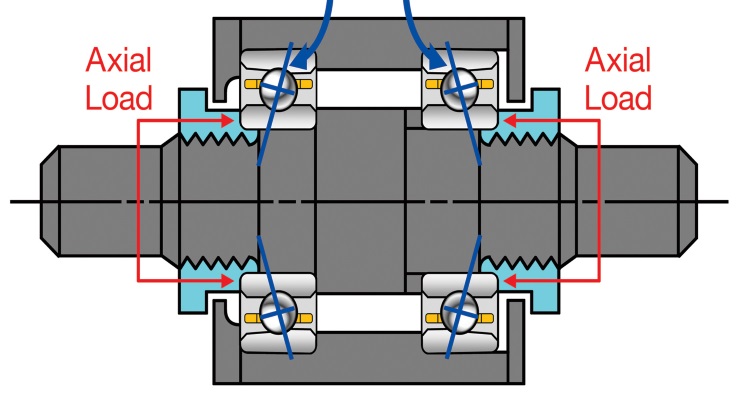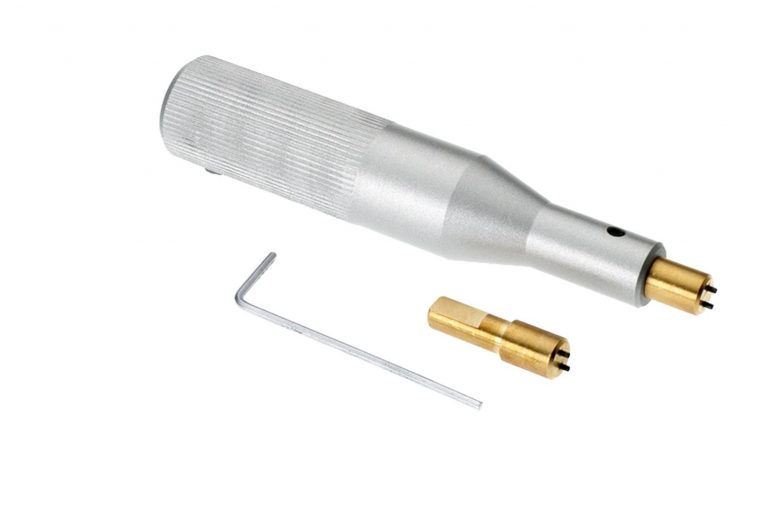Perhaps we can agree that, if it is a bottom rung (or orphaned) tonearm then careful fettling by hand is good enough, whereas, for a supported design with a factory bearing preload of <=1 micron it is best to send it back to the shop in order to retain/restore its intended bearing performance.
For reference, a micron (aka micrometre) is 1×10−6m, or one millionth of a metre, one thousandth of a mm (0.001mm), or about 0.000039 inch.
The chance of stopping at the 1 micron of preload of a top RB tonearm bearing on the first try by hand has to be pretty close to none existent. All the more so, when we take into account that once over, even by a micron, there is no going back without starting over with new parts. IOWs, there exists one shot with which to hit the target.
Below: Typical tonearm vertical bearings, a pair of which are preloaded by being clamped together via a central rod, threaded on either end such that adjustable nuts bear down on the inner ring of each bearing, with the 1mm flange of the outer ring bearing upon the arm tube bearing housing (i.e. equal but opposite direction of force). This results in the preload depicted in image C below, with the angle of the axis of bearing travel the one side being exactly opposite to that of the bearing race on the other side. Result, maximum rigidity combined with minimum friction.
Bearing preload illustrated (from National Precision Bearing):
Left image:
A bearing with no play, or an interference fit has all rolling elements loaded, wears and heats up excessively.
Center image:
A bearing with standard play in the free state has low rigidity, and rolling elements can slide or skid instead of rotating.
Right image:
A standard bearing with proper preload applied will provide system rigidity, reduced vibration, and optimal bearing life.







